After watching the first test of a nuclear bomb on July 16, 1945, as part of the Manhattan Project to which he had devoted years of research during WWII, physicist J. Robert Oppenheimer reportedly contemplated a phrase from the Bhagavad Gita: “Now I am become Death, the destroyer of worlds.” The advent of nuclear weapons brought a new level of technology, and a new capacity to inflict devastation and terror, to the human experience and to the relationships amongst nations. Below are ten countries whose pursuit and/or possession of nuclear weapons has created dangers that were unprecedented, and perhaps unimaginable, before that day in 1945.
10. Syria: Uncertain Technology, Unstable Regime
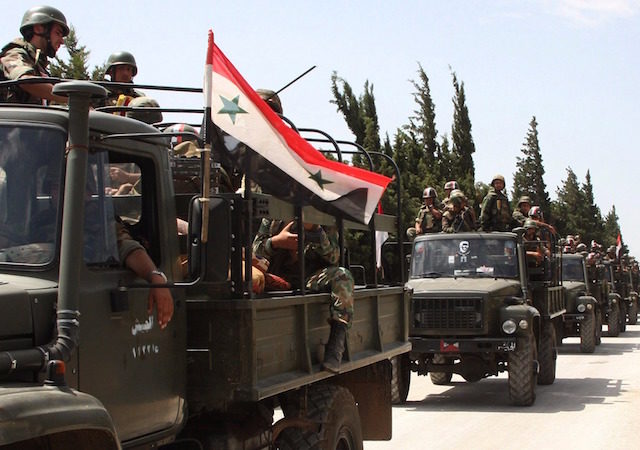
In September of 2007, a group of Israeli bombers destroyed a nuclear reactor at Al Kibar in Syria. This reactor, an exact copy of a North Korean model, was located in a remote area, which, coupled with its lack of connection to any electrical network, suggested that its only purpose could be as part of a nuclear weapons development program. While Syria denied any reactor was present at the site and stated that Israeli had only bombed a warehouse, Syria’s efforts to clean up all traces of the site, as well as its reluctance to allow international inspections certainly suggested it may have had something to hide. Its removal of international inspectors when suspicious, though not definitive, uranium particles were found on the site also suggests that Al Kibar was not merely the site of an ordinary warehouse. In early 2015, Syria again faced allegations that it is continuing to develop nuclear weapon technology, though it’s not believed that it currently has any weapons.
In late 2013, after deadly chemical weapons attacks on civilians in rebel-held areas of Syria outside of Damascus, Syrian President Bashar al-Assad agreed to destroy stockpiles of chemical weapons. The Syrian government disputes accounts that it deployed these weapons, blaming rebel groups. Either way, the use of chemical weapons (especially on civilians) underscores the lengths to which this conflict has escalated, and the threat that could be posed if either side gains access to any nuclear material or weapons.
9. Libya: Nuclear Bullet Dodged in Protracted Civil War
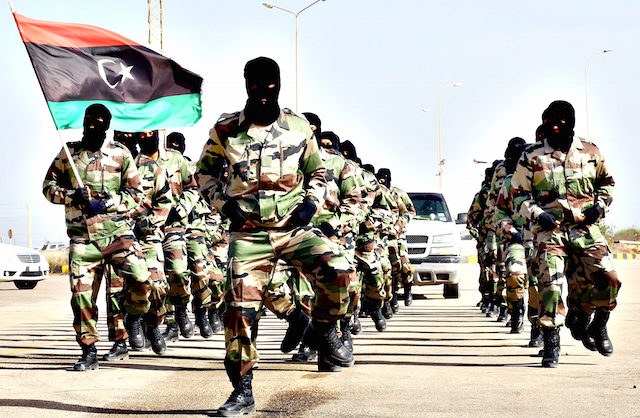
Since Libya’s 2011 revolution, which culminated in the death of longtime dictator Muammar Gaddafi, the country has been embroiled in unrest, spilling over into outright civil war. Two competing governments, one allied with the Libyan military, the other with Islamist groups and militias claim dominion over Libya, whose population has coped with the loss of basic services and a functioning economy as the country has devolved into chaos and uncertainty.
With everything that is visibly going wrong in Libya, it seems almost ridiculous to point out a bright spot. However, there is a big one: in 2003, Libya’s government announced an agreement with the US and the UK to eliminate its nuclear, chemical and biological weapons stockpiles. This meant that as Gaddafi’s government fell, he was unable to deploy nuclear weapons (or perhaps, more likely, sell off nuclear technology and weapons components to other rogue states or groups to raise cash) to secure his power. Additionally, the dangers nuclear weapons or components could have posed during the subsequent civil war cannot be overstated, given the infrastructure degradation, instability of the coalitions competing for power, and the various ties to extremist groups and militias alleged on both sides.
8. Iran: Seeking Nuclear Technology…and Regional Dominance?

Iran doesn’t have nuclear weapons…yet. There’s controversy about how capable and motivated the country is to produce nuclear weapons. What is clear is that Iran’s nuclear technology, which the country’s government has repeatedly asserted is used for peaceful energy and medical applications only, includes several facilities that are capable of creating weapons-grade enriched plutonium and/or uranium.
In July of 2015, the US, the UK, France, China, Russia and Germany, along with the EU, reached an agreement with Iran to lift heavy economic sanctions in exchange for actions by Iran that would prevent, or at least significantly slow, the country’s ability to make nuclear weapons. Why did these nations view the possibility of an Iranian nuclear weapon as such a threat? Why were they willing to negotiate with a government who has likened western powers like the US to “the Great Satan”?
The answer has to do with geopolitical tensions tied to Iran’s relative strength and position within the region. Israel views the potential for Iranian development of nukes as an existential threat, saying that it will take all necessary action to prevent the hostile regime from developing weapons that could be used against Israel. Additionally, Iran’s Arab neighbors and Saudi Arabia have expressed concerns about the shift in the regional balance of power Iranian nukes might produce, suggesting the possibility of an arms race (nuclear or otherwise) in the region to counter any additional power gained by Iran.
7. China: Expanding its Borders…and Sharing Nuclear Technology Beyond?

China has been involved in a number of regional security disputes, including squabbles with Japan and the Philippines, among others, over territory in the South and East China Seas. In October of 2015, the United States got involved as well, sending a Naval Destroyer through an artificial island chain that China claims, but that the US and its regional allies assert is international waters. However, while the battle over regional dominance is likely to continue, few believe that these disputes will rise to level of nuclear war. While it has developed developed submarines capable of launching nuclear missiles that can hit the United States, which could theoretically spark Cold War type tensions between the two, some experts argue China may merely be trying to ensure a “mutual vulnerability” through technology that ensures at least a few of its estimated 250 nuclear warheads would survive to counter an all-out attack.
While China’s nuclear weapons seem unlikely to be used on the battlefield, the main reason the country’s nuclear arsenal can be considered dangerous is because of the proliferation risk associated with its technology. China helped Pakistan acquire nuclear technology in the 1980s and a 2015 report from the US Congressional Research Service noted, “Concerns persist about Chinese willingness as well as ability to detect and prevent illicit transfers…Missile proliferation from Chinese entities is a continuing concern.”
6. India: An Escalating Arms Race with an Arch-Enemy
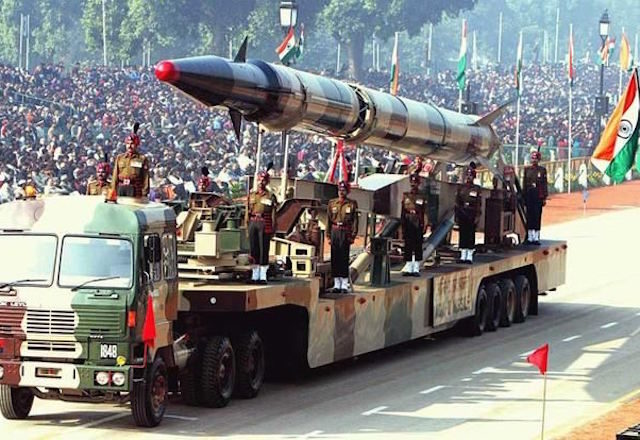
The constant simmering tensions with neighboring arch-rival Pakistan were likely one of India’s motivations to acquire nuclear weapons, which it first tested in 1974. In 1998, after Pakistan tested its own nukes, India quickly retaliated with additional tests, prompting yet another test by Pakistan. This tit-for-tat testing provided a concerning demonstration of the two countries’ determination to prove their strength and emerge as victor.
While the exchange of nuclear tests has stopped, the exchange of aggressive rhetoric on the part of officials in India and Pakistan has not. While India has pledged to avoid the first use of nukes in a conflict between the two states, Pakistan, perhaps concerned about India’s conventional military superiority, has not, prompting fears that conflict between the countries could quickly turn nuclear. Additionally, as each country builds their nuclear stockpiles (neither are signatories to the non-proliferation agreement), seeking to dominate or deter the other, the chances of an accident increase as well.
5. Israel: An “Open Secret” Heightens Regional Tensions

Israel occupies a unique position amongst the “nuclear club,” with its government never having publicly admitted to developing or possessing nuclear weapons. Despite this policy of “nuclear ambiguity”, and the efforts of allies, like the United States to avoid making definitive statements on the existence of Israeli nuclear arms, most experts say that there is no doubt that such an arsenal exists.
Israel’s official policy is that it will not be the first to introduce nuclear weapons to the Middle East, which has been interpreted to mean that it will not test or openly acknowledge its military nuclear capabilities. While part of the apparent rationale for this policy was to avoid provoking a rush to acquire nuclear weapons amongst Israel’s Arab neighbors and Iran, the open secret of Israel’s nuclear capabilities has certainly created some regional tension. In addition to the threat of Israel deploying nuclear weapons in regional conflict, some scholars have suggested that world powers may have been willing to overlook possession of dangerous chemical weapons by Egypt and Syria, reasoning that they acted as a non-nuclear deterrent to a nuclear-armed Israel. In other words, Israel’s not-so-secret nuclear weapons increase tension, nuclear ambitions, and non-nuclear weapons stockpiles in a part of the world that is already prone to violent conflict and instability.
4. Pakistan: A Nuclear Rivalry, A Militaristic Government
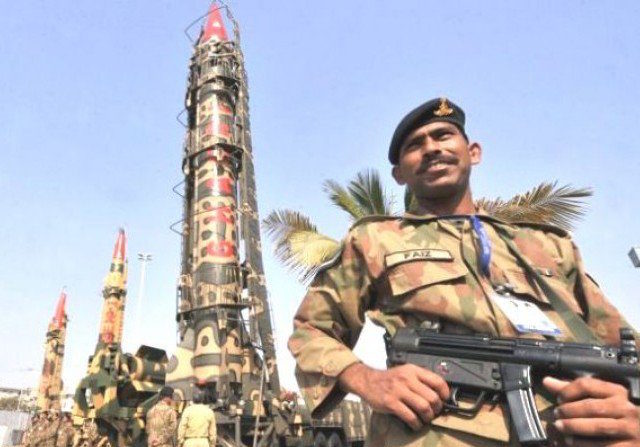
Pakistan is currently estimated to possess about 120 nuclear warheads. While that number is relatively small, its arsenal is the world’s fastest-growing, and some experts suggest that at its current pace, by 2025, Pakistan could have the world’s third biggest nuclear arsenal, behind only the United States and Russia.
Pakistan’s nuclear arsenal poses several dangers. Pakistan is not a signatory to the global Nuclear Non-Proliferation treaty and has has provided nuclear technology to rogue states, like North Korea. The country has also refused to adopt a “no-first-use policy” on nuclear weapons, citing the potential need to counter an invasion from arch-rival and neighbor, India, with which it has fought three previous wars. This stance heightens the potential for a nuclear exchange between these two countries (India also has nuclear weapons), especially as Pakistan seeks to develop smaller, battlefield-ready tactical nuclear weapons. Finally, the country’s nuclear arsenal is under the control of a militaristic government with questionable ties to extremist groups, increasing the potential for nuclear weapons to be deployed or to fall into the hands of terrorist organizations.
3. Russia: A Big Nuclear Arsenal and Aggressive Ambitions
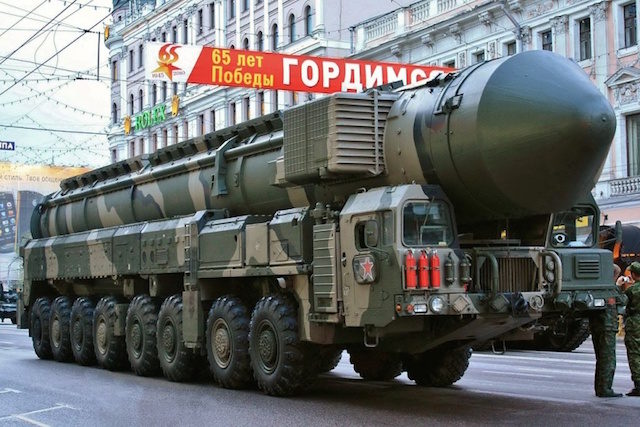
With a nuclear arsenal estimated to comprise more than 4,500 weapons, Russia is one of the world’s most formidable nuclear powers. In addition to the risks of accident such a large arsenal poses, Russian nuclear weapons have underscored the increasing bellicosity of the country’s government.
With its 2014 annexation of Crimea in Ukraine and subsequent support of pro-Russian separatists in Ukraine, Russia, under President Vladimir Putin, has assumed an increasingly aggressive posture in its exchanges with other countries. In June of 2015, Putin indicated that Russia would be adding 40 intercontinental ballistic missiles to its arsenal, in part because of the presence of anti-missile systems near its border. NATO Secretary General Stoltenberg denounced this move as “saber rattling.” With Russia amping up what it characterizes as a deterrence arsenal, while reserving the right to deploy nuclear arms in Crimea, the dangers of another Cold War-type arms race escalate, along with increasing the risk of accidental deployment and heightening the threat posed by regional territorial disputes.
2. USA: A History of Nuclear Deployment…and Nuclear Accidents

The United States is the only country in possession of nuclear weapons that has actually used them for wartime purposes, with the bombings of Hiroshima and Nagasaki in 1945. More than 100,000 people died in the initial blasts, with tens of thousands sickened, some fatally, from exposure to radiation. President Truman, citing projections of 1 million casualties if a ground invasion was necessary to secure Japanese surrender, authorized the use of nuclear weapons in hopes of concluding the war immediately. Six days after the bombing of Nagasaki, Japanese emperor Hirohito announced his country’s surrender.
Controversy continues to rage over whether the United States’ use of nuclear weapons, particularly against a largely civilian target, was justified. However, the current danger posed by the US nuclear arsenal is mostly driven, not by the potential for the weapons’ deployment in a military scenario, but rather, by the possibility of an accident. In the 30 years following 1950, the US counts a reported 32 “broken arrow” incidents, military terminology for accidents involving nuclear weapons. Several of these incidents came perilously close to devastating consequences, including the 1961 release of two four-megaton hydrogen bombs over North Carolina after the aircraft flying them broke up in midair. One of weapons completed 5 of the 6 steps required to explode on impact, though luckily, the sixth safety mechanism, which had a history of malfunction, worked this time and prevented detonation. As recently as 2007, nuclear warheads were accidentally flown around the country for more than a day before the Air Force noticed they were missing. With a nuclear arsenal of more than 5,000 weapons and a steady history of close calls, the danger of an accident is the most pressing risk posed by the United States nuclear cache.
1. North Korea: Unpredictable Actions, Aggressive Words

North Korea’s nuclear program, much like the nation as a whole, is shrouded in a fog of uncertainty and conjecture. North Korea (also referred to as the DPRK), which has conducted three nuclear tests, has one of smaller arsenals in the “nuclear club”; some experts gauge the size of North Korea’s nuclear cache at 10-15 weapons. Additionally, while North Korea has announced that it can miniaturize nuclear weapons, military and scientific experts remain divided over the validity of this claim.
Despite its relatively small quantity of nuclear weapons and doubts over the advancement of its warhead technology, North Korea poses an outsize threat for several reasons. First, the country has a history of exporting its nuclear technology, helping Syria build a copycat nuclear reactor in the mid-2000s. North Korea, which is strapped for cash, could decide to secure a quick buck by sharing its technology again, either with rogue states or, even, with terrorist organizations. Further amplifying the threat is North Korea’s shaky history of complying with agreements to restrict its use of nuclear technology, suggesting that diplomacy and sanctions may not be sufficient to curtail the country’s nuclear ambitions.
Finally, North Korea is led by an aggressive and unpredictable dictator, Kim Jong Un, whose regime’s statements suggest a willingness to use the country’s nukes to neutralize perceived foes. In September 2015, the head of North Korea’s Atomic Energy Institute echoed this bellicose stance, saying, “If the U.S. and other hostile forces persistently seek their reckless hostile policy towards the DPRK and behave mischievously, the DPRK is fully ready to cope with them with nuclear weapons any time.”
2 Comments
The biggest threat is that terrorists could steal a nuclear bomb or the
materials necessary to build one–the information to build a nuclear
bomb similar to the one that destroyed Hiroshima–and set it off, or
use it to hold an entire city for ransom. We proved that one nuke
can “take out a city” and kill hundreds of thousands or millions of
people. The effects of what a single relatively small nuke can do to
a city were so horrifying that the U.S. classified them as top secret
for many years. Modern nuclear bombs are about 25 times more
powerful than the early ones used on Japan at the end of WW2.
In 1998, after Pakistan tested its own nukes, India quickly retaliated with additional tests, prompting yet another test by Pakistan. This tit-for-tat testing provided a concerning demonstration of the two countries’ determination to prove their strength and emerge as victor.
Dear Writer
Please don’t make ambiguous statements; In 1974, India test fired a Russian made Atomic Bomb and in 1998, India was the first country to test fire home made Nuclear bomb and after the test Indian Govt. started threatening Pakistan, and the UNO didn’t stopped Indians like they did to Iranians, as a result Pakistan was enforced to test the bombs.